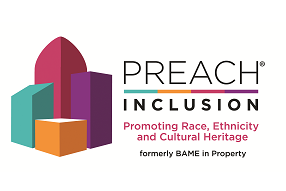While the industry is aware that both the perceptions and reality of diversity in Real Estate need to change to ensure the very best available talent can get in and get on, there are still barriers to progress in this area.

Through both the recruitment processes and in-company practices, the sector is inadvertently alienating those from backgrounds that might be different from the stereotype (and often reality) of those already in the sector.
Wanting to understand the spread of age, gender, religion, disability status, socio-economic background and more, compared with national averages and other industry-specific data, Cobalt recently conducted research into the diversity of candidates applying for roles in real estate (as well as those in construction, accountancy & finance, and business support positions within the space).
The real estate sector is a well-networked space, where candidates often job-seek through their personal connections forged from school days and friends-of-friends, or gain entry to the industry through parents or family members, rather than having to register with an agency or job-search independently.
Real Estate Balance found in 2022 that 24% of the sector had come from an independent/fee-paying school, which Cobalt’s research supports, finding 13% of applicants had come from this background – the lower figure may be explained by the long-lasting networks many from this background have, meaning they don’t necessarily need to look for a new role as often.
Either way, these figures are substantially higher than the 7.5% national average of those from an independent/fee-paying education in the UK in other professions, which suggests a huge opportunity for the sector to focus on the significant percentage of other applicants interested in working within it. Recruiting from outside traditional networks encourages the diversity of thought and positive change that different perspectives can bring.
Cobalt’s research revealed a strong, diverse representation across different communities, with just under half of candidates overall (49%) coming from a non-white background (compared to the national figure of 19% of the UK population).
However, it is important to measure all relevant applicants in this data, including both those who have progressed to the final stages of roles and those who’s eventual employment may have fallen off.
While the percentage of white applicants to real estate roles remains high - 62% described themselves as white in the research and this figure likely to be larger for those in the sector and not looking for a new role – it is worth asking whether initial attraction strategies are doing enough to include those from a diversity of backgrounds, and whether organisations’ internal environments are inclusive enough to encourage true belonging for those from non-white backgrounds.
On the face of it, an encouraging statistic when it comes to diversity in the sector is that over 9% of those that apply for real estate roles (more than any other role-type we measured in our research) identified as LGBTQ+, compared to the 3.2% national average.
But it is important to understand whether the difference is caused by a greater desire or need among the LGBTQ+ community to be job hunting than the general population, and why this may be, or whether the sector is proving particularly successful in attracting candidates from this group.
Either way, what’s clear is that there’s a high volume of those from an LGBTQ+ background interested in working in the sector - something incredibly important for organisations to consider from both a staff retention and attraction point of view, to be able to attract the best talent available to them.
Organisations should also care if their employees or prospective employees are defined as a carer. In the real estate sector, the research suggests just under one-third (32%) of all candidates have a caring responsibility of some kind, with nearly one quarter (23%) having specific responsibility for children within this.
Many employers and managers still aren’t aware of the caring responsibilities of their employees – or indeed how these responsibilities might affect whether they want to stay in a role or be attracted to a new one.
Human resources and talent acquisition teams need to ensure that policies, practices and packages reflect the needs of this large group of people, and that there are no barriers in the recruitment processes for carers.
Diversity is a journey and not just a tick box. Diversity improves organisations through enhanced diversity of thought and psychological safety when someone can bring their true self to their place of work.
It is therefore important to keep challenging and improving real estate and construction industry recruitment processes; educating hiring managers, HR and TA teams on inclusive hiring practices; and reporting on the diversity of candidates who go through recruitment processes, with the ultimate aim of increasing the pool of quality talent available to organisations and improving the sector as a whole.
Megan Bond is head of inclusion at Cobalt Recruitment





























No comments yet